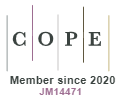Optimization of business service in a bank branch
DOI:
https://doi.org/10.5585/iptec.v10i1.21043Keywords:
Queuing theory, Discrete event simulation, FlexSim, Banks, Queue LawAbstract
This study aimed to promote the adequacy of the service times of a bank branch to the Law of Queues, with a maximum waiting time (target times) of 20 minutes on normal days and 30 minutes on peak days. Therefore, the objective of the study is to develop a computational model capable of optimizing the service time in a bank branch. Data were collected through “Bank A”, refer to the month of August 2019 and contain 587 attendances. After obtaining the rhythmic data of arrival and customer service, the ideal number of servers was calculated to suit the service to the target times. The system being modeled, for the purpose of the initial calculations, will be assumed as a model of the MMc type. The discipline adopted for the queue is FIFO (First In, First Out), where the first to arrive is the first to be served. Probabilistic distributions of rhythms were studied and the agency was modeled in FlexSim and several scenarios were tested. Actual waiting times of up to 64 and 48 minutes, peak days and normal days, respectively, collected in the bank system (current scenario) were reduced to up to 28 and 19 minutes, respectively, in the simulated scenarios. The social and management contributions of this work lie in the reduction of the agency's service time, with a positive impact on customer satisfaction, increased efficiency and better use of the staff.'
Downloads
References
Arenales, M., Armentano, V., Morabito, R., & Yanasse, H. (2007). Pesquisa operacional. Elsevier.
Bazzo, W. A., & Pereira, L. T. do V. (2014). Introdução à engenharia: conceitos, ferramentas e comportamentos. (4ª ed.) Ed UFSC.
Bateman, R. E., Bowden, R. O., Gogg, T. J., Harrel, C. R., Mott, J. R. A., & Montevechi, J. A. B. (2013). Simulação de sistemas: aprimorando processos de logística, serviços e manufatura. Elsevier.
Chwif, L., & Medina, A. C. (2015). Modelagem e simulação de eventos discretos: teoria & aplicações. (4ª ed.) Elsevier.
Confederação Nacional da Indústria (2016). Desafios para a indústria 4.0 no Brasil [Folheto]. Brasília: CNI.
FlexSim Software Product. (2019). Inc. Versão 19.1.0. User Manual.
Geier, L. A., Piran, C., Sznitowski, A. M., & Pacheco, L. A. (2010, outubro). Dimensionamento do número de caixas executivos em relação à demanda e tempo de atendimento: um estudo de caso de uma agência bancária no interior do estado de Mato Grosso. Anais do XXX Encontro Nacional de Engenharia de Produção, São Carlos, SP, Brasil.
Lei n. 10.993, de 21 de dezembro de 2001 (2001). Dispõe sobre o atendimento ao consumidor, nos caixas das agências bancárias. https://www.al.sp.gov.br/repositorio/legislacao/lei/2001/lei-10993-21.12.2001.html
Marques, C. F. (2012). Estratégia de gestão da produção e operações. IESDE.
Minitab, LCC. (2020). Versão 19, User Manual.
Moreira, D. A. (2016). Pesquisa Operacional: curso introdutório. (2ª ed.) Cengage Learning.
Prado, D. (2014). Usando o ARENA em simulação. Série “Pesquisa Operacional”. (5ª ed., v. 3) Falconi.
Ritzman, L. P., & Krajewski, L. J. (2004). Administração da produção e operações. Pearson Education Brasil.
Torres, O. F. (1966). Elementos das Teorias das Filas. Revista de Administração de Empresas. 6 (20), 111-127. https://doi.org/10.1590/S0034-75901966000300005
Tukey, J. W. (1977). Exploratory data analysis. Massachusetts: Addison-Welley.
Vieira, F. F., Nascimento, M. H., Figueiredo, C. C., & Nascimento, A. (2019). Unveiling the industry 4.0 concept and the use of is Technologies. ITEGAM-JETIA, 5(19), 21-28. https://itegam-jetia.org/journal/index.php/jetia/article/view/489
Downloads
Published
How to Cite
Issue
Section
License
Copyright (c) 2022 Revista Inovação, Projetos e Tecnologias

This work is licensed under a Creative Commons Attribution-NonCommercial-ShareAlike 4.0 International License.
- Abstract 438
- PDF (Português (Brasil)) 359








